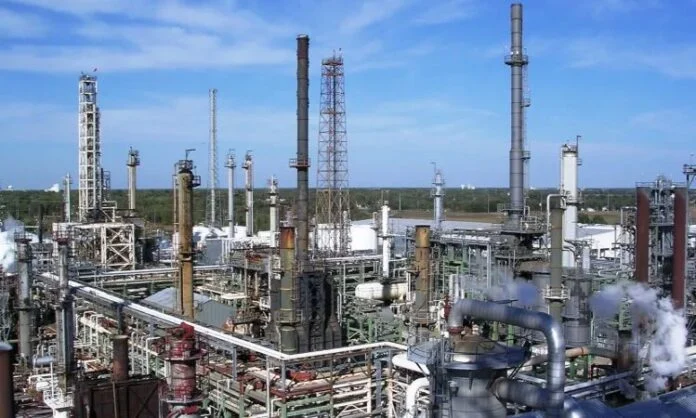Patna: The Bihar Cabinet’s approval of the “Bihar Industrial Investment Promotion Package 2025” on August 26 heralds a transformative era for the state’s industrialization, positioning it as a prime destination for big ticket investors. Extending the 2016 Bihar Industrial Investment Promotion Policy until March 31, 2026, this ambitious package introduces groundbreaking incentives—free land, substantial financial aid, and streamlined processes—to dismantle longstanding barriers such as high land costs, inadequate infrastructure and bureaucratic delays.
Targeting high-impact sectors like manufacturing, agro-processing, renewable energy and IT/ITES, the initiative aims to create one crore jobs over five years, curb youth migration and elevate Bihar from an agrarian economy to a dynamic industrial hub. By fostering industrial clusters, robust supply chains, and sustainable development, the package could redefine Bihar’s economic landscape, rivaling established industrial states like Gujarat and Maharashtra.
Also Read: A leap towards green: Bihar unveils new renewable energy policy
Game-Changing Incentives Unveiled
Chief secretary Amrit Lal Meena, addressing the media post-Cabinet meeting, described the package as a “catalyst for rapid industrial development.” Its flagship offering is free land transfers at a symbolic ₹1 token fee under three specialized allotment schemes, with Fortune 500 companies eligible for up to 10 acres gratis and non-scheme investors receiving a 50% discount on Bihar Industrial Area Development Authority (BIADA) land rates. Additional incentives include interest subvention capped at ₹40 crore, full reimbursements for skill development programs, environmental compliance, renewable energy adoption, land conversion fees, patent registrations, and quality certifications.
Meena emphasized that these measures leverage Bihar’s strengths—low-cost labor, abundant workforce, and strategic proximity to eastern markets—to create an ecosystem where large investments yield high returns. “This package will provide jobs to one crore youth in five years, aligning with Chief Minister Nitish Kumar’s vision for employment-driven growth,” he stated, highlighting its potential to address unemployment and reshape Bihar’s economic narrative.
Also Read: Bihar business connect sees signing of MoU worth ₹1.81 lakh cr
Building on a Foundation of Progress
The 2025 package builds on Bihar’s sustained efforts to attract investors, which have gained significant traction since the 2016 Bihar Industrial Investment Promotion Policy introduced GST reimbursements, stamp duty waivers, export subsidies, and power concessions for priority sectors like food processing, IT/ITES, textiles, and leather. The Bihar Business Connect summits have been instrumental in this journey. The 2023 summit, the first major investor meet since 2007, secured 300 Memorandums of Understanding (MoUs) worth ₹50,530 crore across sectors: ₹15,570 crore in manufacturing, ₹10,304 crore in food processing, and ₹26,429 crore in textiles/leather, with Adani Group alone committing ₹8,700 crore.
The 2024 summit escalated this momentum, attracting investment proposals worth ₹1.81 lakh crore from companies like Sun Petrochem, Adani and others, focusing on renewables, manufacturing, and agro-based industries. By September 2024, ₹36,000 crore from 238 companies (stemming from 2023 MoUs) was under implementation, with over 3,800 industry setup proposals received by December 2024, signaling growing investor confidence. Infrastructure improvements—better roads, drainage systems, power supply, and facilitation centers—have complemented these efforts, while global outreach, such as the December 2024 Ambassadors’ Meet in Delhi involving 16 countries, has elevated Bihar’s international appeal.
Also Read: ₹2,181-Cr LoI inked for investment in Bihar’s food processing sector
Industry Reactions: Optimism and Strategic Shifts
The 2025 package has sparked enthusiastic responses from industry leaders, who see it as a turning point for Bihar’s investment climate. The Confederation of Indian Industry (CII) Bihar Chapter lauded the free land provision as a “disruptive move” that eliminates one of the biggest hurdles for large-scale projects. A senior CII representative noted, “Free land at ₹1 and a ₹40 crore interest subvention are unmatched in India, making Bihar a compelling choice for capital-intensive ventures like manufacturing and renewables.” Adani Group, already invested in Bihar’s power and agro sectors, expressed plans to explore additional projects, citing the package’s alignment with their sustainability goals through eco-incentives. Sun Petrochem, a 2024 summit participant, called the skill development and patent cost reimbursements “forward-thinking,” signaling intent to establish a petrochemical unit in Begusarai.
Smaller players, like textile firms in Bhagalpur, welcomed the 50% BIADA land discount, noting it levels the playing field for mid-sized enterprises previously deterred by costs. However, some industry voices, like the Bihar Chamber of Commerce, cautioned that success hinges on expedited infrastructure upgrades, particularly in power reliability and logistics, to match the package’s ambition. Overall, the corporate response reflects optimism, with many firms revising expansion strategies to prioritize Bihar, anticipating high ROI driven by low labor costs and generous incentives.
Also Read: Bihar industries dept showcases investment scope in IT/ITeS sector
Transformative Potential for Industrialization
The 2025 package is poised to be a game changer, directly addressing Bihar’s historical challenges—poor connectivity, bureaucratic red tape, and land acquisition costs—that have long placed it behind industrial leaders like Gujarat and Maharashtra. Industries Minister Nitish Mishra emphasized that the free land incentive could trigger rapid project setups, creating job multipliers, enhancing supply chains, and boosting GDP. Eco-friendly rebates align with global ESG trends, attracting sustainable investments, while skill development support ensures a ready workforce, critical for sectors like IT and electronics.
By leveraging Bihar’s abundant labor and proximity to markets like West Bengal, Odisha, and Northeast India, the package could position the state as an eastern industrial hub, mirroring Gujarat’s growth model but tailored to local strengths. Economists project that successful implementation could reduce poverty, stem out-migration, and elevate Bihar’s per capita income, historically among India’s lowest, by fostering industrial clusters in cities like Patna, Gaya, and Muzaffarpur.
Also Read: Centre approves startup guidelines focussed on technical textiles
Bihar vs. Other States: A Competitive Edge
Bihar’s 2025 package stands out for its aggressive concessions compared to other investor-friendly states:
Gujarat (2015 Policy): Provides 10-15% capital subsidies (capped at ₹15-25 lakh for MSMEs), 5-7% interest aid over five years, and sector-specific incentives (e.g., aerospace, semiconductors), but lacks free land, offering only partial reimbursements, which increases setup costs.
Maharashtra: Offers electricity duty exemptions (up to seven years for select units), ₹1/unit power subsidies in backward areas, stamp duty waivers, and customized packages for mega projects, but land is subsidized, not free, elevating initial investment burdens.
Uttar Pradesh (2023 Policy): Targets FDI above ₹100 crore with capital subsidies, skill reimbursements, and land subsidies in industrial parks, but focuses on Fortune 500 firms without broad free land access, limiting mid-sized investor participation.
Tamil Nadu (2021 Policy): Includes up to 10% capital subsidies, FDI schemes, R&D reimbursements, and subsidized land in industrial parks, but no outright free land, constraining cost savings for large projects.
Bihar’s Advantage: Offers free land (up to 10 acres for Fortune 500 firms), a ₹ 40 crore interest subvention cap (surpassing peers’ 5-7% limits), and comprehensive rebates for sustainability, skills, and innovation. Coupled with Bihar’s lower labor costs (30-40% below national averages), this ensures higher ROI, making it more attractive for capital-intensive ventures despite infrastructure gaps.
Also Read: Bihar’s purchase policy to promote local industries on anvil: Minister
Political and Economic Implications
With assembly elections looming, the package counters opposition narratives of economic stagnation, positioning the Nitish Kumar government as proactive on job creation—a key voter concern. Mishra noted that its success could inspire nationwide models to bridge regional disparities, with Bihar setting a precedent for incentivizing growth in underdeveloped states. Early indicators, such as Adani’s operational units in power and agro-processing, rising investor inquiries, and the implementation of ₹36,000 crore in projects, suggest the state is translating summit promises into reality. The package’s focus on inclusive growth—through skill development and eco-incentives—could also appeal to global investors prioritizing sustainability, further elevating Bihar’s profile.
If executed effectively, the 2025 package could redefine Bihar’s economic identity, turning it from a migration-driven state into an industrial beacon. By building on past successes and addressing industry demands, Bihar is not just inviting investment but crafting a sustainable model for prosperity, with the potential to reshape eastern India’s economic landscape.




